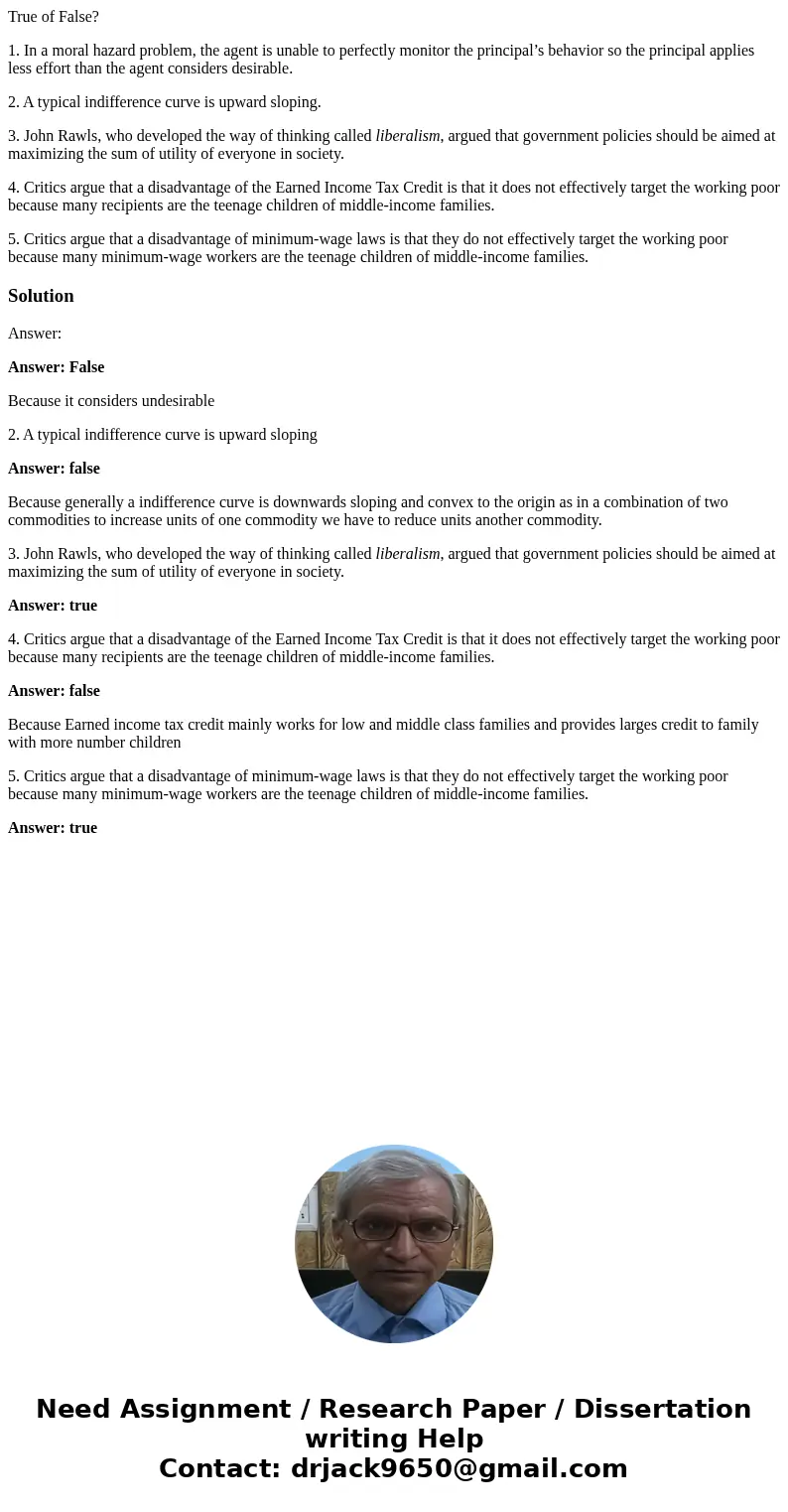True of False 1 In a moral hazard problem the agent is unabl
True of False?
1. In a moral hazard problem, the agent is unable to perfectly monitor the principal’s behavior so the principal applies less effort than the agent considers desirable.
2. A typical indifference curve is upward sloping.
3. John Rawls, who developed the way of thinking called liberalism, argued that government policies should be aimed at maximizing the sum of utility of everyone in society.
4. Critics argue that a disadvantage of the Earned Income Tax Credit is that it does not effectively target the working poor because many recipients are the teenage children of middle-income families.
5. Critics argue that a disadvantage of minimum-wage laws is that they do not effectively target the working poor because many minimum-wage workers are the teenage children of middle-income families.
Solution
Answer:
Answer: False
Because it considers undesirable
2. A typical indifference curve is upward sloping
Answer: false
Because generally a indifference curve is downwards sloping and convex to the origin as in a combination of two commodities to increase units of one commodity we have to reduce units another commodity.
3. John Rawls, who developed the way of thinking called liberalism, argued that government policies should be aimed at maximizing the sum of utility of everyone in society.
Answer: true
4. Critics argue that a disadvantage of the Earned Income Tax Credit is that it does not effectively target the working poor because many recipients are the teenage children of middle-income families.
Answer: false
Because Earned income tax credit mainly works for low and middle class families and provides larges credit to family with more number children
5. Critics argue that a disadvantage of minimum-wage laws is that they do not effectively target the working poor because many minimum-wage workers are the teenage children of middle-income families.
Answer: true

 Homework Sourse
Homework Sourse